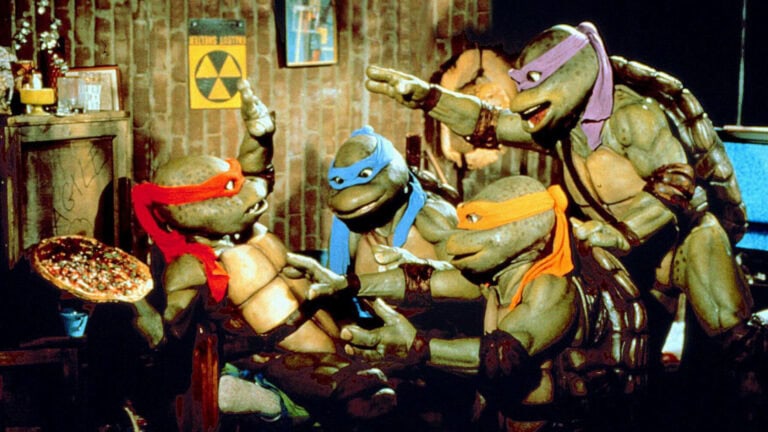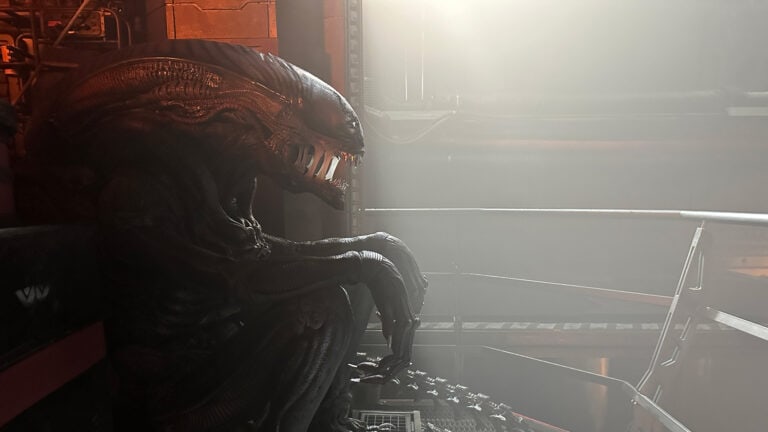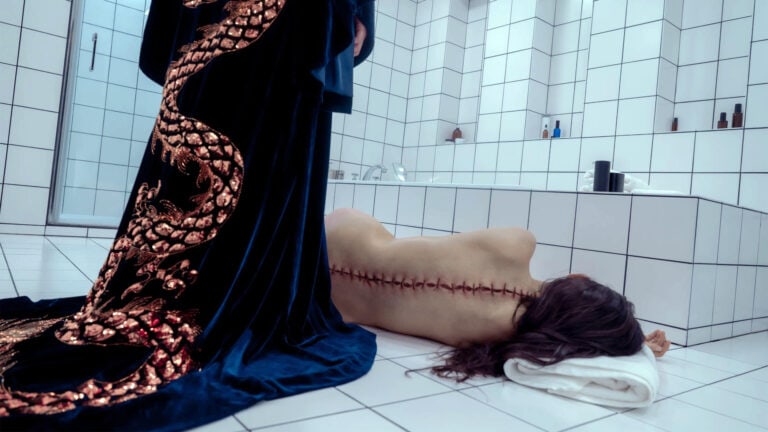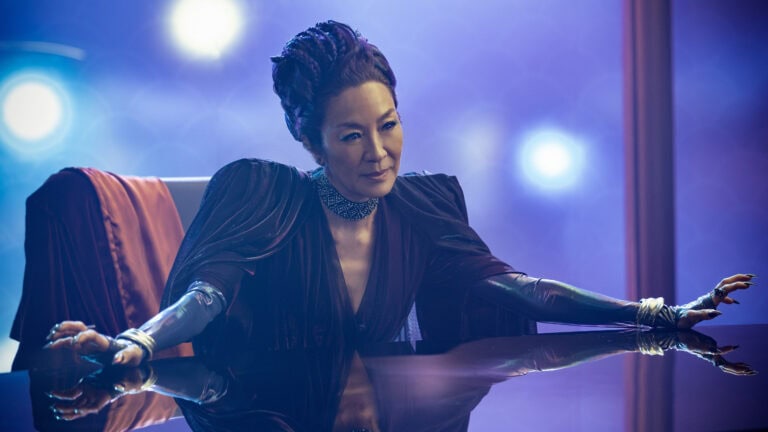Silas Carson: Portraying Ki-Adi-Mundi and Nute Gunray in the Star Wars Prequels
Silas Carson shared behind-the-scene stories, from his initial creative collaboration to performing as Ki-Adi-Mundi and Nute Gunray in the prequel trilogy.
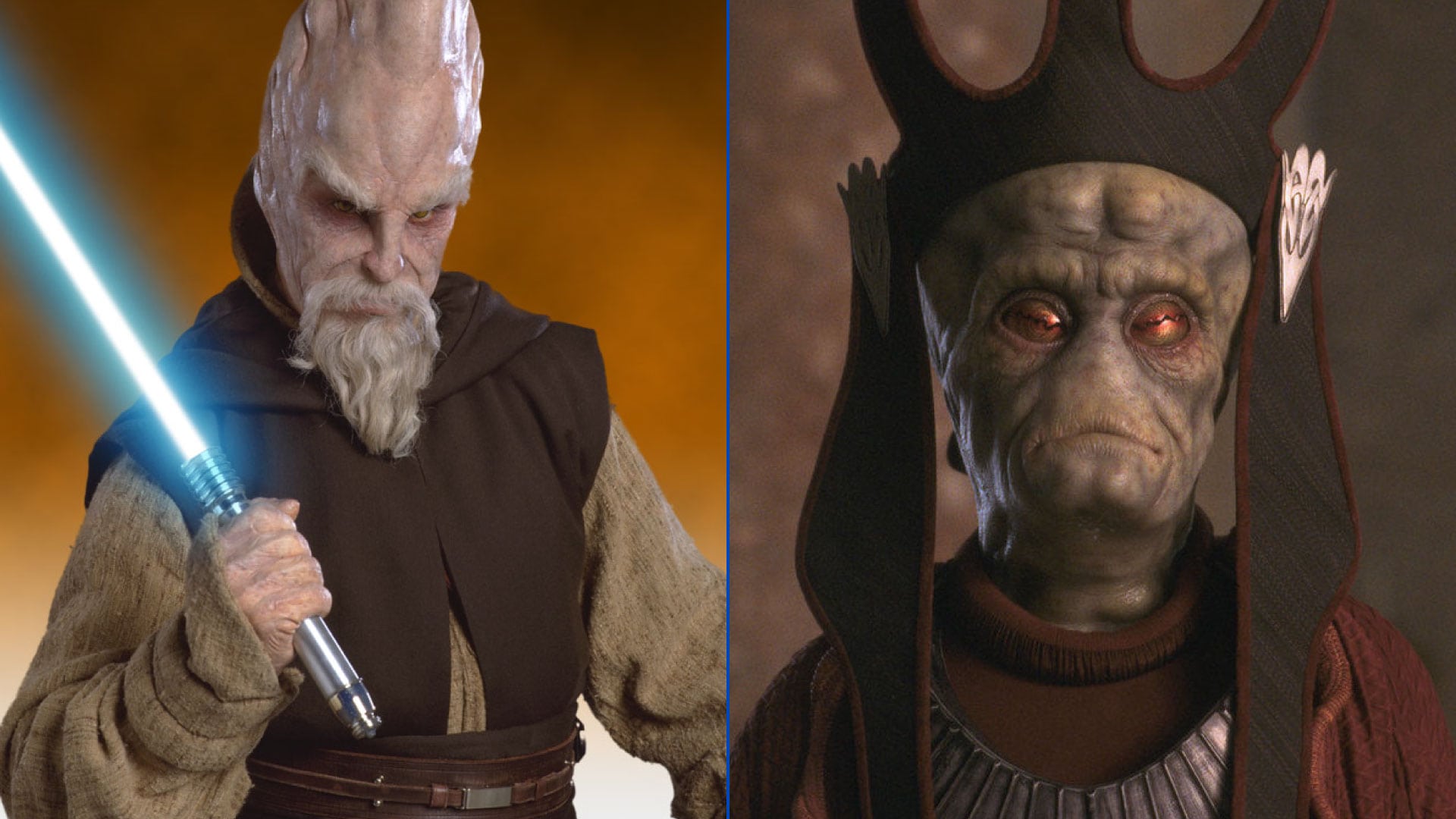
The prequels brought to the silver screen compelling character designs from the collaboration of incredible artists, coming to life through the gifted performances of versatile talent—some of which contributed from the early stages of the creative process. Silas Carson, the man behind Ki-Adi-Mundi and Nute Gunray, is one of them, and his Star Wars story is a fascinating one to say the least.
The Pilot that Never Was
Silas Carson didn’t grow up with Star Wars. However, his unfamiliarity with the franchise worked in his favor during an audition with Robin Gurland—George Lucas’ Personal Assistant and Casting Director for The Phantom Menace—for the role of a pilot, which never actually made it into the script. “Robin said to me that George Lucas loved the interview because I was just being honest about my utter ignorance, and I wasn’t trying to get into his favor. I didn’t even know who George Lucas was … isn’t that crazy?” Carson shared.
Despite the removal of the pilot role from the script, Silas Carson’s impactful audition led him to yet another pilot role—beside actress Bronagh Gallagher for a couple of scenes at the beginning of The Phantom Menace.
One role led to another, and Silas Carson became involved in an early screen test of the Naboo submarine sequence for Episode I. “They needed three people. So there was Marc Warren [Obi-Wan Kenobi]—who’s a brilliant British television actor—myself [Jar Jar Binks], and Jerome Blake [Qui-Gon Jinn]—who had done creature work before. We spent the day just helping George out trying to create the physicality of the scene,” Carson said.
Transforming into Ki-Adi-Mundi
Call it destiny, but when Robin Gurland took Silas Carson on a stroll around the workshop for The Phantom Menace, Silas Carson established an unexpected connection with one of the creatures. “I saw the head of Ki-Adi-Mundi, and I said to Robin ‘That’s amazing. That’s beautiful.’ It was a really beautiful design, and out of all of these kinds of weird aliens there was this head that to me looked very noble,” Carson shared.
At the time, the noble Jedi wasn’t named yet, and Silas Carson had never done prosthetics work before, but after Robin Gurland offered the role to Carson on the spot, he gladly accepted, under the condition that he would be allowed to voice the character. And so the same conversation happened for the role of Nute Gunray. “One thing led to another, that’s how it happened. They weren’t casting for Ki-Adi … they weren’t casting for Nute … they thought about doing the voices later. They were just casting this pilot that never happened. I just kept getting phone calls and kept turning up. But I think I was just willing to be a part of it, to try anything out.”
Silas Carson shared his experience cosmetically transforming into these fascinating characters. “Ki-Adi-Mundi’s makeup took about four and a half hours to put on and about an hour and a half to take off. I just sat in a chair and meditated, trying to keep as still as possible and watched what these extraordinary artists do,” Carson said.
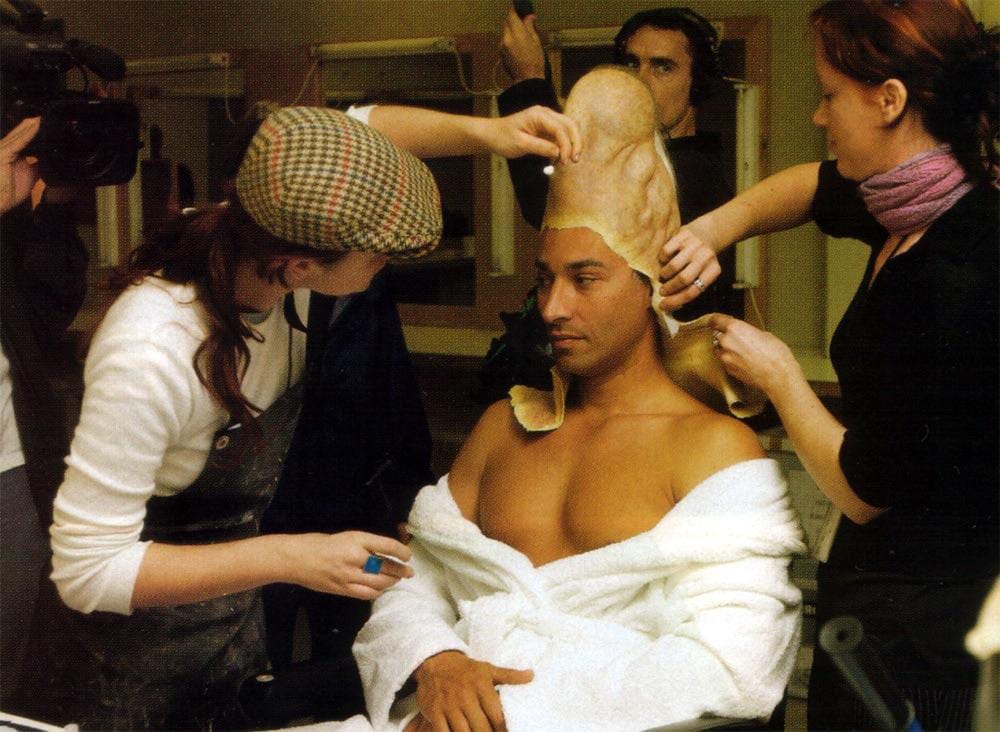
“When I first looked at myself, I couldn’t believe it. It was an incredible transformation. I could very vaguely make out my own facial structure underneath it because, of course, my mouth and nose were uncovered,” Silas Carson explained. “A lot of the people I was playing alongside didn’t get to see who I actually was underneath, so I would carry a photograph around.”
The Challenges of Special Effects Makeup
It takes a particular kind of person to break a performance out of the constrictions of special effects makeup—to project a character’s personality through physicality. “What struck me straight away was the fact that I was not able to use facial expressions with Ki-Adi-Mundi because the prosthetic didn’t move like my skin. So then immediately I was thinking ‘Okay, I have to translate what I’m doing through physicality.’ It’s really about how you are in space, how your body is in space. That is a much more theatrical way of working than a filmic one,” Silas Carson said.
“Physically being on set, I enjoyed doing Ki-Adi-Mundi much more because it was comfortable. But with Nute Gunray, it was a less comfortable experience … it was very hard to be in those heads. We could only actually be in those things for about 20 minutes, half an hour tops because it was so hot and sweaty and caused claustrophobia from breathing your own air. It was really uncomfortable, and that interrupted the flow of the performance,” Silas Carson explained.
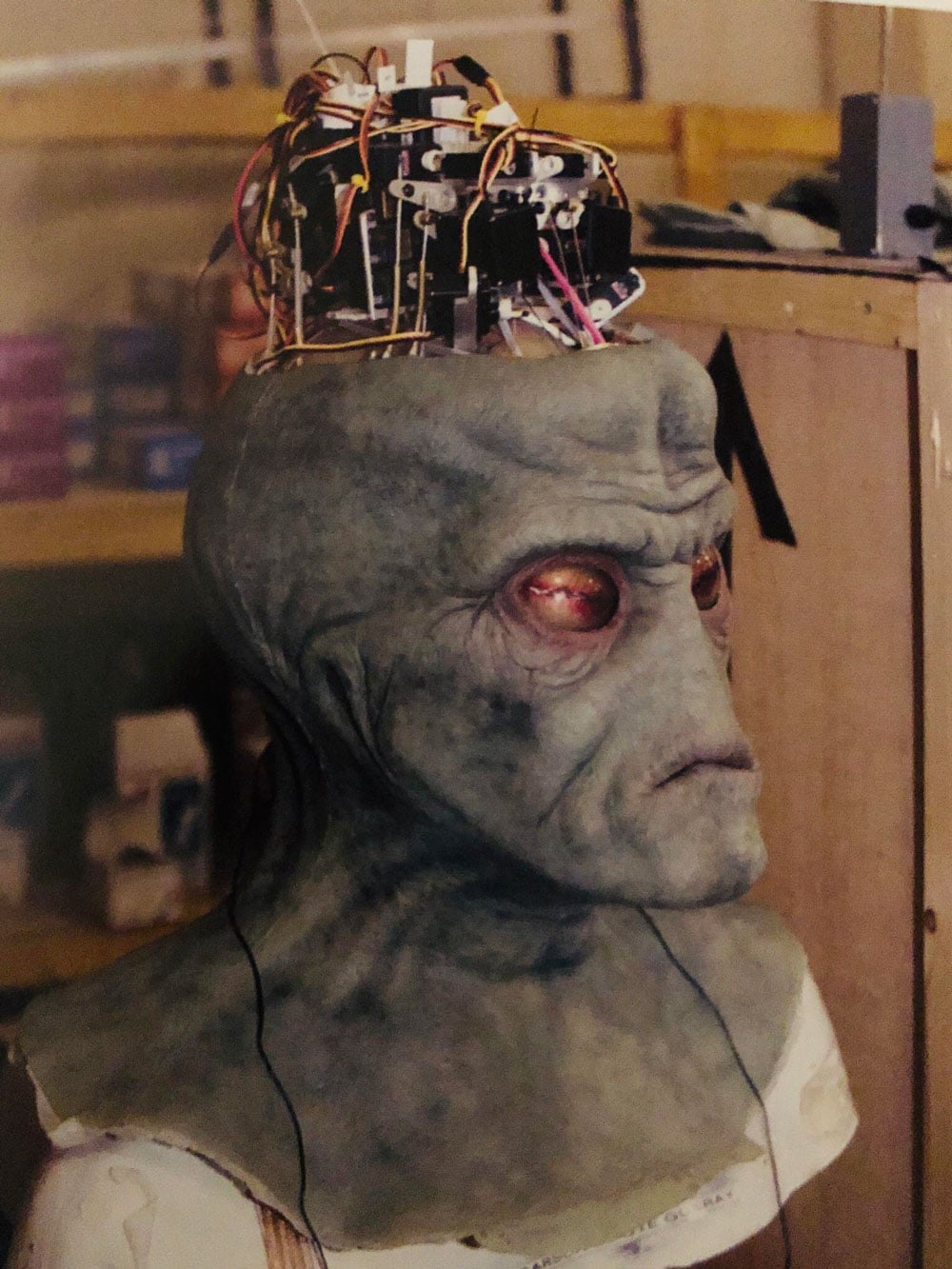
“Another thing about Nute as well was that those backpacks with all the batteries and the electronics for the face were incredibly heavy. Then you’ve got these incredibly heavy robes … everything was crushing in on you.”
Voicing Nute Gunray and Ki-Adi-Mundi
Wearing these characters was just half of the performance—especially with Nute Gunray, since the animatronic facial movements, paired with the physicality of the actor, had to be matched with an equally strong voice performance.
“The great joy of doing Nute Gunray for me was recording his voice. It was George and I—and Rick McCallum sometimes—in a booth just recording the voice, and on The Phantom Menace that was done at Abbey Road Studios. For me, that was a huge thing. I go into work at Abbey Road Studios, which you know, the Beatles recorded in,” Silas Carson shared.
George Lucas was the one who came up with the idea for the Neimoidian accent, inspired by Thai native speakers—sounding like they have a blocked nose, which matched the facial features of the aliens. Silas Carson then developed a generalized version of the Thai accent while incorporating his inspiration from Hungarian actor Peter Lorre’s performances for the obsequiousness of Nute Gunray.

Ki-Adi-Mundi was a much more flexible and direct performance. Silas Carson explained his connection with the noble character and how he developed the voice. “The first thing that struck me when I first saw the model of Ki-Adi was that he had a very kind, gentle look about him. He looked to me like an old wise Native American soul … somebody whose wisdom goes back through ancestry for hundreds of years. There’s something very grounded about his voice,” Carson said. “I wanted to find a gentility to his voice. I just kept my own accent for him. It was really a question of grounding the wisdom in the age and the kindness and gentility … somebody who speaks much more slowly, who speaks very kindly.”
Training with Nick Gillard and Ki-Adi-Mundi’s Last Stand
Since Ki-Adi-Mundi was a Jedi Master, Carson had to expand the physicality of the character through lightsaber dueling. He shared his brief experience training with stunt coordinator and swordmaster Nick Gillard while creating a unique fighting style for the Jedi Master. “Nick is a brilliant teacher because he’s one of those people who takes his lead from you rather than imposing a way of moving or fighting on you,” Carson said. “I have done some sword fighting, and I’m also a tennis player, brilliant with my right hand. If I have to use two hands, it disrupts my right hand. So I said to Nick ‘I could do some double handed stuff, but I would really much prefer—given that I could do some sword fighting—that we get a very light lightsaber so I can use just one hand. He said ‘Actually, there are very few Jedi who use just one hand. Mostly, they’re fighting with two hands. It could be quite good to have one in there who’s a little bit unique.’”
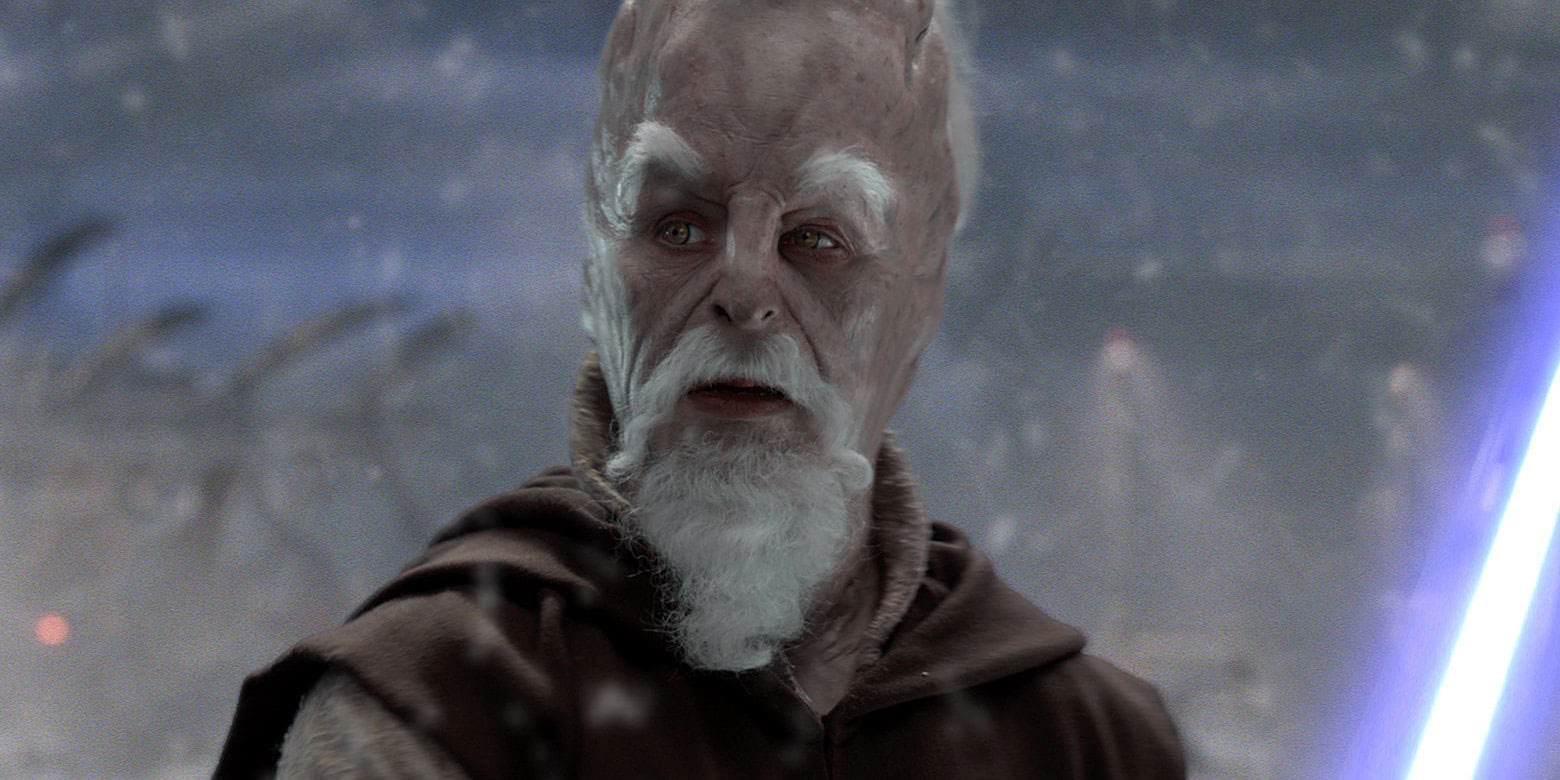
Probably one of the most heartbreaking scenes from Revenge of the Sith was Ki-Adi-Mundi’s last stand during the Battle of Mygeeto, where the noble Jedi Master succumbed after a futile attempt to deflect blaster fire by his fellow clone troopers—acting upon Order 66. “The last stand was quite amazing because it was me on my own on a completely green stage. George said ‘Basically, it’s going to be a lot of blaster fire coming at you, so fight your way through anything you think might be there, and we’ll paint the rest on later,” Carson explained. “Then eventually George, knowing where the camera would be, would say ‘Swing around 280 degrees, and that’s where you get hit and then die.’”
Working with Frank Oz
One of Carson’s best memories working on the prequels was getting to know Frank Oz while filming The Phantom Menace. Originally, Frank Oz puppeteered Yoda—before the character moved on technologically. The Jedi Council set was built on scaffolding so that it was raised six feet off the ground where Frank Oz and his team would be underneath manipulating Yoda.
“One thing I remember from my childhood was sitting down and watching The Muppet Show with my grandma. She absolutely loved this kind of zany sense of humor that was kept hidden behind her pinned exterior … It is one of the happiest memories of my childhood,” Carson said. “So for me to actually be in a room with Frank Oz was a wonderful thing, because it wasn’t any longer about Star Wars or the experience of being there. It was about being able to meet the man behind Piggy and Kermit and all of these wonderful characters.” Franz Oz was touched by Carson’s childhood story, and the two performers eventually ended up having lunch together—connecting on a personal level.
Creatively from the Beginning
To this day, Carson cherishes his abiding memories working on Star Wars—especially the experience of collaborating with extraordinary luminaries during the early stages of the creative process for the prequel films.
“I was invited along to the readthrough for The Phantom Menace. I was sitting with these incredible people. It was historic because it was George coming back to do his thing, and there was so much anticipation of this,” Carson said. “The wonderful thing about acting is that whenever you get together and create a project, it doesn’t matter who you are, what you’ve done before, or who you might become. You are all on a leveled playing field, coming together to put your brains together and figure out how we tell this story.”
During these globally challenging times, it is crucial that we keep spreading positivity across our Star Wars community. Carson wanted to end this interview with a message to the fans: “I just want to reach out and say to all the fans that this is a very difficult situation for all of us. I hope that everybody out there is managing. I hope that we all get to see each other in some form again soon. In the meantime, I really hope that you’re able to manage the situation. Keep yourself and your families safe.”

